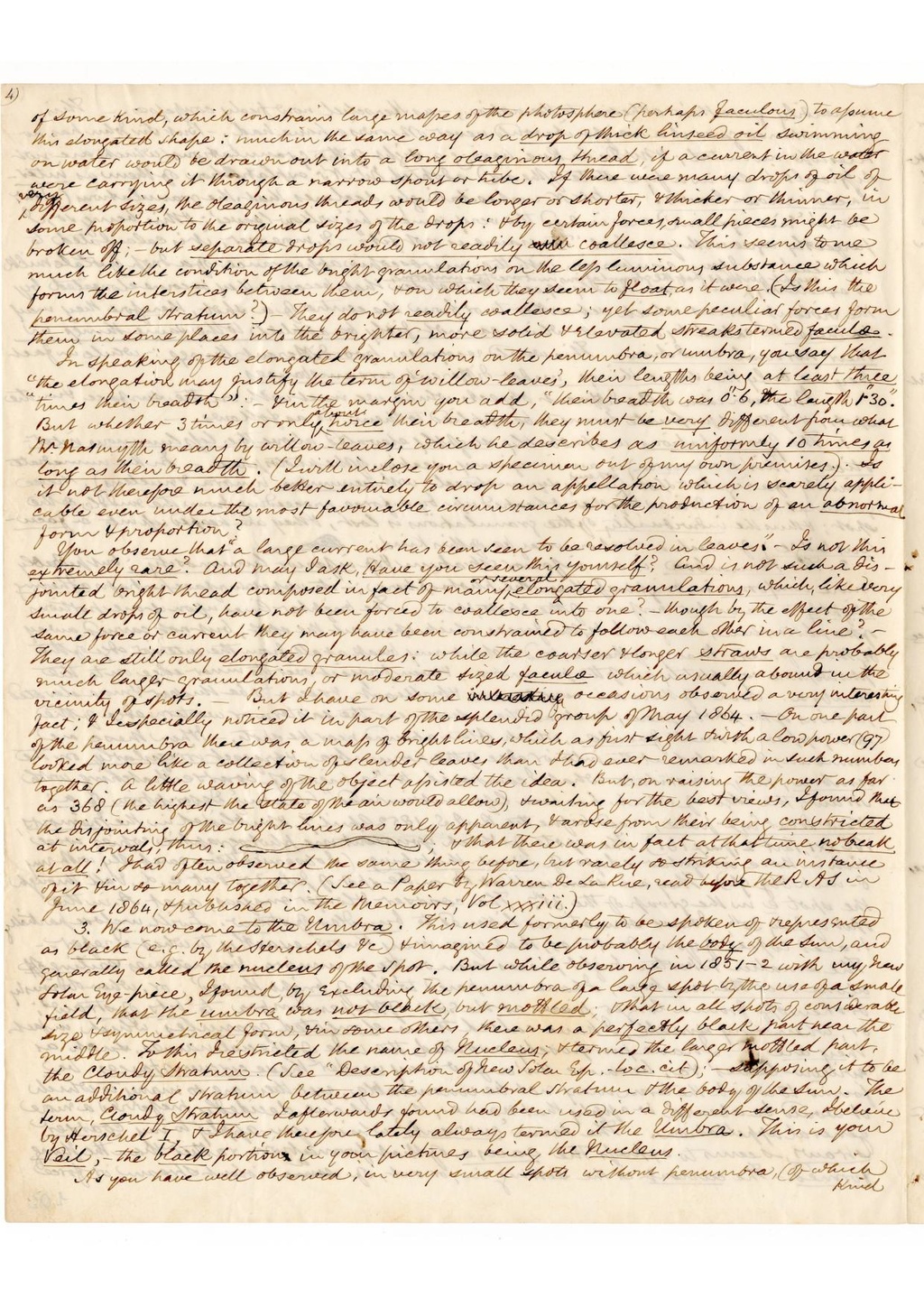of some kind, which constrains large masses of the photosphere (perhaps faculous) to assume
this elongated shape: much in the same way as a drop of thick linseed oil swimming
on water would be drawn out into a long oleaginous thread, if a current in the water
were carrying it through a narrow spout or tube. If there were many drops of oil of
very different sizes, the oleaginous threads would be longer or shorter, and thicker or thinner, in
some proportion to the original sizes of the drops: and by certain forces, small pieces might be
broken off; - but separate drops would not readily coallesce. This seems to me
much like the condition of the bright granulations on the less luminous substance which
forms the interstices between them, and on which they seem to float, as it were. (Is this the
penumbral stratum?) - They do not readily coallesce; yet some peculiar forces form
them in some places into the brighter, more solid and elevated streaks termed faculae.
In speaking of the elongated granulations on the penumbra, or umbra, you say that
"the elongation may justify the term of 'willow-leaves', their lengths being at least three
times their breadth": - and in the margin you add, "their breadth was 0"·6, the length 1"·30".
But whether 3 times or only about twice their breadth, they must be very different from what
Mr. Nasmyth means by willow-leaves, which he describes as uniformly 10 times as
long as their breadth. (I will inclose you a specimen out of my own premises.). Is
it not therefore much better entirely to drop an appellation which is scarely appli-
cable even under the most favourable circumstances for the production of an abnormal
form and proportion?
You observe that "a large current has been seen to be resolved in leaves." - Is not this
extremely rare? And may I ask, Have you seen this yourself? And is not such a dis-
jointed bright thread composed in fact of many or several elongated granulations, which, like very
small drops of oil, have not been forced to coallesce into one? - though by the effect of the
same force or current they may have been constrained to follow each other in a line? -
They are still only elongated granules: while the coarser and longer straws are probably
much larger granulations, or moderate sized faculae which usually abound in the
vicinity of spots. - But I have on some occasions observed a very interesting
fact; and I especially noticed it in part of the splendid group of May 1864. - On one part
of the penumbra there was a mass of bright lines, which at first sight and with a low power (97)
looked more like a collection of slender leaves than I had ever remarked in such numbers
together.
Page:ASC 1865 09 06 13-52.pdf/4
From GATE
Revision as of 18:50, 19 September 2020 by Maria Sermersheim (talk | contribs)
This page has not been proofread
